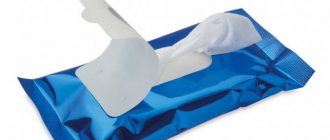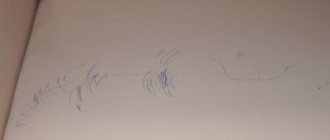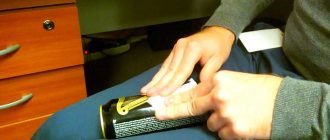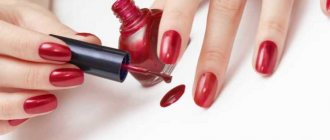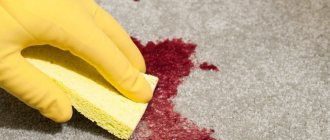Blood stains that appear on the upholstery of upholstered furniture are difficult to clean. Blood is quickly absorbed into the material and coagulates, resulting in permanent staining. To quickly remove such a stain, it is advisable to order sofa cleaning, which will help restore the decorative and operational characteristics of the upholstery. However, you can try to eliminate the disaster yourself, using available means. Tips on how to clean blood from a fabric sofa are collected in this review.
Basic Rules
Before removing blood from the sofa, study the general recommendations. Cleaning will be effective and safe for furniture.
- Choose a product based on the type of material and color of the upholstery.
- Use only warm, or even better, cold water to remove stains, since high temperatures cause blood to coagulate and become more strongly absorbed into the fibers of the fabric.
- Do not pour the product onto the upholstery; apply with a sponge.
- Do not wet the sofa too much, because it is not easy to dry it from the inside.
- When working with aggressive substances, wear thick rubber gloves.
- To remove blood marks without streaks, apply the product from the edges to the center of the stain, and then wipe with a cloth dampened with water.
- Do not use several methods and means at once: the reaction will be unpredictable.
- Test cleaning methods on an inconspicuous area.
- Ensure sufficient air circulation in the room when drying furniture to avoid unpleasant odors.
Special products for blood stains
To eliminate blood stains, there is a universal method that will help in the fight against both new and old stains. These include chemical bleaches and stain removers.
The most effective and popular brands:
- "Antipyatin"
- Udalix Ultra,
- Vanish,
- Unimax Ultra,
- Dr. Beckman.
The products are sold in the form of soaps, sprays, powders and liquid detergents.
They should be selected depending on the upholstery material: for natural leather surfaces or delicate leatherette, it is recommended to use special stain removers. For less demanding fabrics, you can choose a universal product.
Choosing the right cleaner guarantees good results.
Fabric covering
Upholstery with flock, gabardine, chenille, velor and other fabrics is most popular in the production of upholstered furniture. The methods for clearing them of blood are relatively the same. In addition to household chemicals, the following are used:
- soap;
- soda;
- salt;
- ammonia solution;
- peroxide;
- potassium salt (tartar);
- lemon juice;
- borax;
- aspirin;
- meat tenderizer.
We recommend reading: How to clean a sofa from dust and stains yourself
Laundry soap
Don’t waste time, because you can even clean the blood with laundry soap when the stain is still fresh.
- Take a cotton pad, moisten it with water and gently, without rubbing, walk across the surface of the stain from the edges to the middle.
- Repeat several times, then lather the sponge and work it over the remaining marks.
- Dampen a new disc or clean cloth and remove the product from the upholstery.
Aspirin
The product allows you to quickly and effectively cope with a number of everyday problems. For example, if you dissolve an effervescent tablet in 200 ml of water, you get a solution that cleans bloody marks from the surface of upholstered furniture. It is applied with a sponge, then wiped with a cloth soaked in clean water and dried.
By the way, the product is absolutely safe for light-colored fabrics; you can clean stains even on white furniture with an aspirin solution.
Salt or soda
Prepare a paste from water and soda or a very salty solution. Apply one of the products to the contaminated surface with a sponge, and remove the residue with a damp cloth after 30–60 minutes.
Meat baking powder
Dissolve a sachet (about 15–20 grams) of baking powder in 50 ml of cold water. To remove crimson marks from fabric, apply the resulting paste to them. Wash off the product no earlier than an hour later, use a soft damp cloth.
Borax and ammonia
Ammonia is mixed with water, the same is done in a separate container with borax. First, treat the stain with an ammonia solution, then apply another composition. At the end of the procedure, wipe the upholstery with a cloth soaked in clean water and dry with a towel.
Hydrogen peroxide
Blood stains on the sofa can be treated with hydrogen peroxide. Apply it with a cloth flap or a cotton swab (if the stained area is small). Hissing foam is a normal reaction between blood and peroxide. Remove the product with a paper napkin.
Attention! Hydrogen peroxide lightens the fabric, so it is used with caution for dark and colored upholstery, having first tested it on an inconspicuous area.
How to remove old traces of blood?
If for some reason the stain is not immediately noticed and it has dried, use improvised means. Don't immediately resort to chemicals.
Wash off dried stains using cleaning solutions:
- Combine salt with lemon juice to form a paste. Spread the mixture onto the bloody area. Wait 40 minutes, wash off.
- Mix hydrogen peroxide and potassium bitartrate to form a thick paste. Apply the paste to the stain, wait 30 minutes, then vacuum or remove with a rag.
- Boric acid is mixed with borax 1:1. Apply the substance to the fabric, saturate the stained area, let it stand for 15 minutes, then remove the product with water.
- Hydrogen peroxide helps eliminate old blood marks. Apply it to the upholstery and wipe with a damp cloth after 5 minutes.
- Squeeze some good quality shaving foam onto the dried blood of the sofa. The action of the foam is 10 minutes. Wipe with a wet cloth.
Leather coverings
In most cases, fresh marks from a leather sofa are simply washed off with water. If the blood is absorbed, you will have to tinker a little longer: use cream of tartar, shaving foam or dishwashing liquid.
Dishwashing gel
You can wash stains not only from plates. The product is used to remove difficult stains from clothing and upholstery.
- Add a few drops of gel to warm water and mix thoroughly.
- Soak a soft sponge in a soap solution, treat the stain, and leave for half an hour.
- After the specified time, wipe the problem area of the upholstery with a damp cloth.
Warnings and Tips
Before treatment, the blood stain is soaked for half an hour in ice water and then the substance is applied.
Suede, velvet, plush, velor are cleaned dry.
Fresh blood can be removed only with water, rubbing the surface with a wet cloth.
For the best effect, use a toothbrush; it washes the material faster and cleaner.
Be sure to take precautions with ammonia; its vapors are poisonous.
After processing and rinsing, apply and press a dry cloth to the upholstery so that the remaining liquid does not have time to be absorbed into it.
You can dry the wet area with a hairdryer, this will save time.
If it is impossible to wet the material, then apply a dry product, then vacuum the sofa.
Leatherette upholstery
It is not difficult to remove fresh traces of blood from leatherette; just wipe them with a damp cloth. But if time is lost, you will have to make a solution consisting of the following components:
- 20 ml of ammonia;
- 2 drops of dishwashing gel;
- glass of water.
The resulting liquid is applied to the stained area. Rub stains with a melamine sponge or soft toothbrush, and then remove any remaining product with a damp cloth.
How to wash suede upholstery?
The most effective way to remove blood stains from a suede sofa is ammonia.
What you will need:
- ammonia;
- water;
- napkins.
Way:
- combine ammonia and water in appropriate proportions 1 to 4;
- periodically moistening the napkins in the resulting liquid, treat the stain;
- wipe the area with a damp cloth.
After complete drying, use a special brush with rubber bristles to walk over the suede upholstery to lift up the flattened pile.
How to remove blood from a sofa if it has dried
You will have to rack your brains about how to remove blood stains if they were placed on the upholstery a long time ago. Unfortunately, not all methods and means cope with long-standing complex stains.
Ammonia solution and a mixture of cream of tartar and lemon juice are effective.
You can use household cleaning products and detergents or seek help from a professional cleaning company.
Bloody stains on upholstered furniture spoil its appearance, and at the same time the mood of the owner. Getting rid of them is not easy, but it is possible. For this, there are many household chemicals and folk methods, which should be chosen based on the color and structure of the upholstery material.
Cleaning with household chemicals
The ranking of the most effective drugs includes:
- Vanish. Available in liquid, powder or spray form. Works great on old blood stains even in cold water. Any Vanish is suitable for cleaning upholstery. If you purchased a spray stain remover, spray Vanish on the upholstery and wait a few minutes, then remove the residue with a sponge. If you decide to use powder, moisten it with a little water and apply to the upholstery. Wait 15-20 minutes and remove dried residue with a brush or vacuum cleaner. Apply liquid Vanish to the stain with a sponge and leave for at least half an hour. At the last stage, rinse thoroughly with water and dry the area.
- Frau Schmidt. Suitable for absolutely all types of materials, since the composition does not include aggressive substances. Available in the form of bar soap. Simply wet the contaminated area and treat it with soap. Leave on for a few minutes and rinse with water. If the procedure does not bring the desired result, repeat.
- Dr. Beckmann. It was created to remove stains of protein origin, so it actively works on stains such as blood. Dampen the stain remover onto the stain and let it sit for 10-15 minutes. At the final stage, rinse the substance with water and dry the surface.
- Udalix. Available in spray, liquid, powder or stick form. You can use any Udalix stain remover, but a pencil will be more convenient. Rub a fresh stain with a pencil until foam forms and leave for 15 minutes. Rinse off any remaining product with water. Repeat the procedure if necessary.
- Antipyatin. Product with active oxygen. Dilute 10 g of the substance in 0.5 liters of water and moisten the blood stain. After 15 minutes, rinse off the resulting foam with water and dry the surface.
Please note that not all products are suitable for all types of fabrics, so always read the package instructions before use.
Rules for cleaning blood trails
Before you begin neutralizing unwanted stains, you need to check what material the upholstery is made of. The future method of cleaning upholstered furniture will depend on this.
When cleaning blood stains, keep the following points in mind:
- Never use hot water when removing marks. High temperature promotes blood clotting and will cause even more contamination.
- Apply the prepared products to a sponge, brush or rag, but not to the surface of the sofa.
- Wear gloves when working. Some chemicals can be very caustic, so it's best to take care of yourself beforehand.
- When cleaning, we recommend moving from the edge of the problem area to the middle.
- Do not mix several chemicals at once. The rule “more is better” does not apply here.
- After the procedures, ventilate the room. You will not only refresh the room, but also help the upholstered furniture dry out faster.
Flock and chenille sofa
When treating upholstery made of velvety fabrics such as flock or chenille, it is better not to use conventional detergents, as they may leave marks.
Different fabrics require different cleaning approaches.
Soda and lemon juice
A mixture of baking soda and lemon juice can gently treat a velvety surface without leaving any marks.
Baking soda will help get rid of blood stains.
Procedure:
- Moisten the stain with water.
- Mix soda and juice into a slurry. Immediately apply the sizzling mixture to the stain.
- Hissing will indicate the progress of the reaction. Lightly rub the paste into the stain. Wait 15-20 minutes.
- Remove any remaining product.
A baking soda solution will also help get rid of stains on your sofa.
Cleaning blood from suede
Suede has a pile, which complicates the situation somewhat. However, you can remove stains if you know a few tricks.
Ammonia
Ammonia is not only a faithful friend in medicine, but also a reliable companion when removing difficult to remove blood traces.
You need to take the following steps:
- In a 4:1 ratio, combine water with ammonia.
- Dip a clean rag into the mixture.
- Gently rub the resulting solution into the problem area. If you see that the rag has become dirty, you should immediately replace it with a new one. This way you will achieve a better effect.
- Dry the sofa upholstery and treat it with a suede brush.
9% vinegar
Vinegar will not only help get rid of the bloody stain, but also restore the faded color of the upholstery fabric.
To remove a trace of blood, you need to do the following:
- Take a spray bottle and mix 100 ml of 9% vinegar, 1 teaspoon of detergent and 400 ml of hot water.
- Add 1 tablespoon of soda to the resulting mixture.
- Spray the mixture on the surface of the furniture.
- Rub the dirtiest area thoroughly with a brush.
- Remove dirty liquid with a sponge and clean water.
- Ventilate the room and dry the sofa.
Useful tips
Almost all household chemicals are harmful to humans. You must protect yourself from exposure to harmful substances on your body.
Useful tips to help protect your health:
- While working, you should only clean the sofa upholstery while wearing gloves. Thanks to them you can avoid burns and allergies.
- Do not thoroughly wet the surface of the sofa. In the worst case scenario, mold may develop on the upholstery.
- When choosing a chemical composition, always follow the instructions for use. Please note that not every product is suitable for upholstered furniture.
We looked at how quickly and easily you can deal with bloody marks on your favorite sofa. In fact, there is nothing complicated in this procedure, the main thing is to choose the right method and the appropriate chemical.
